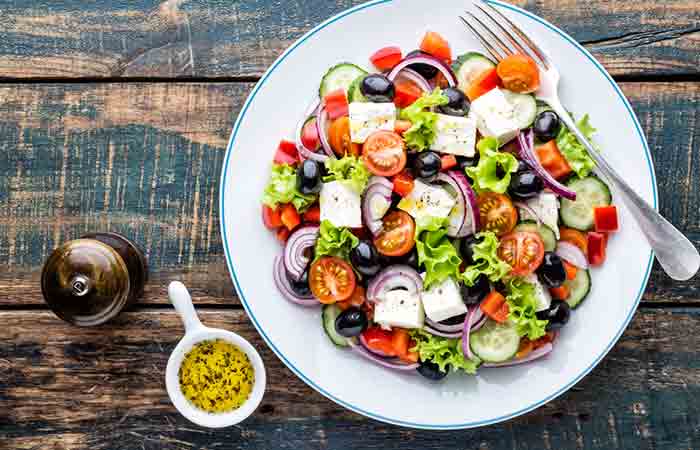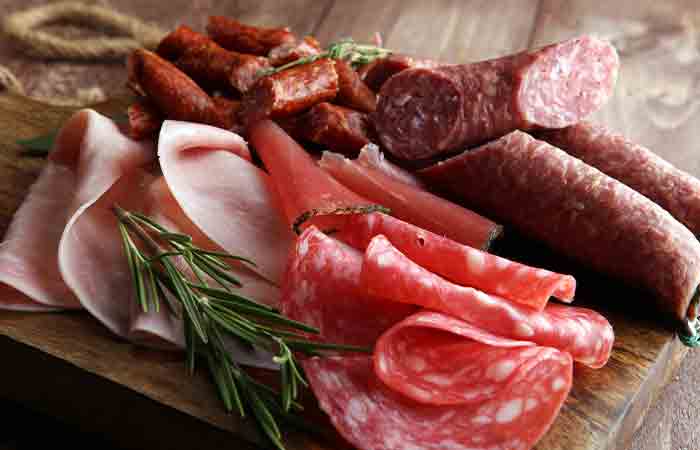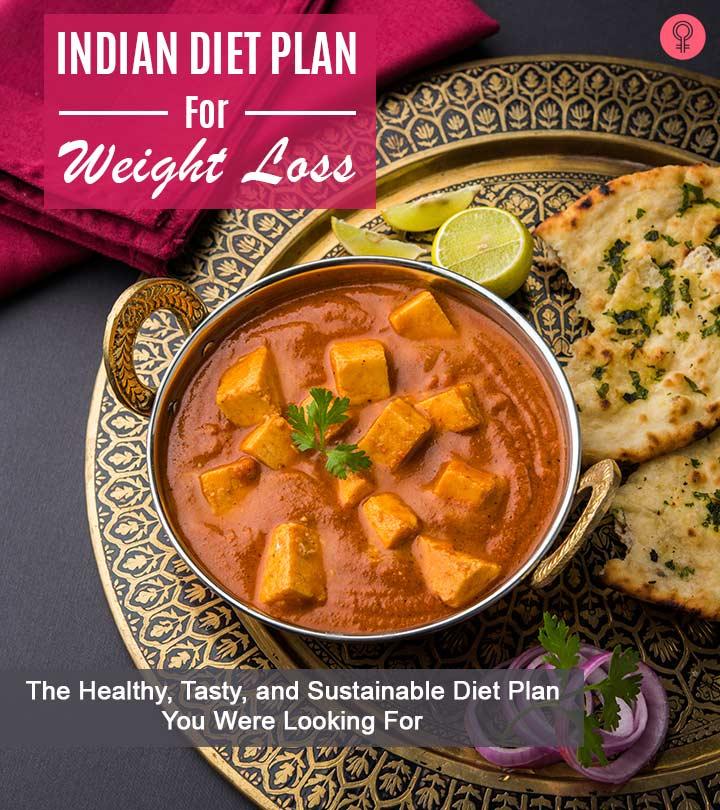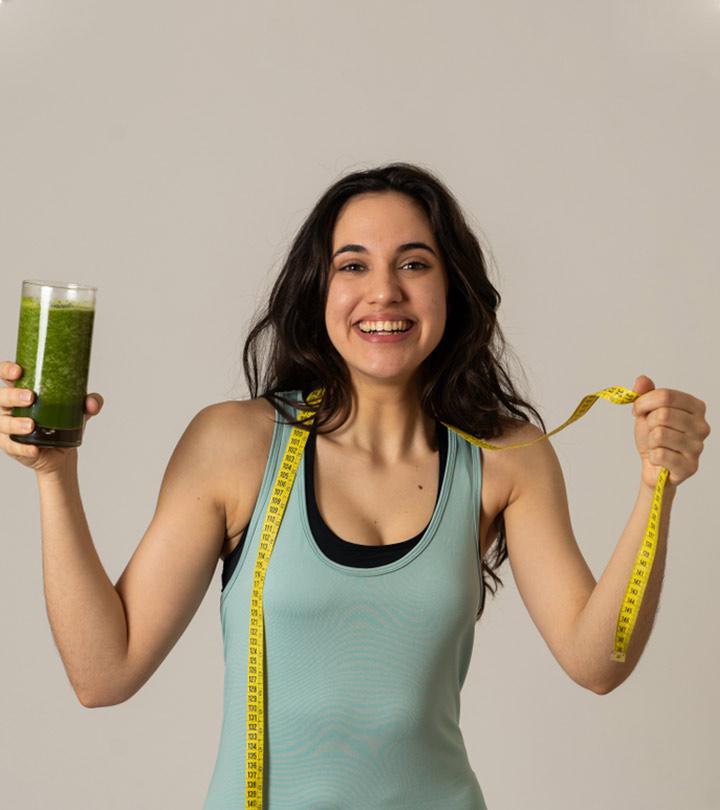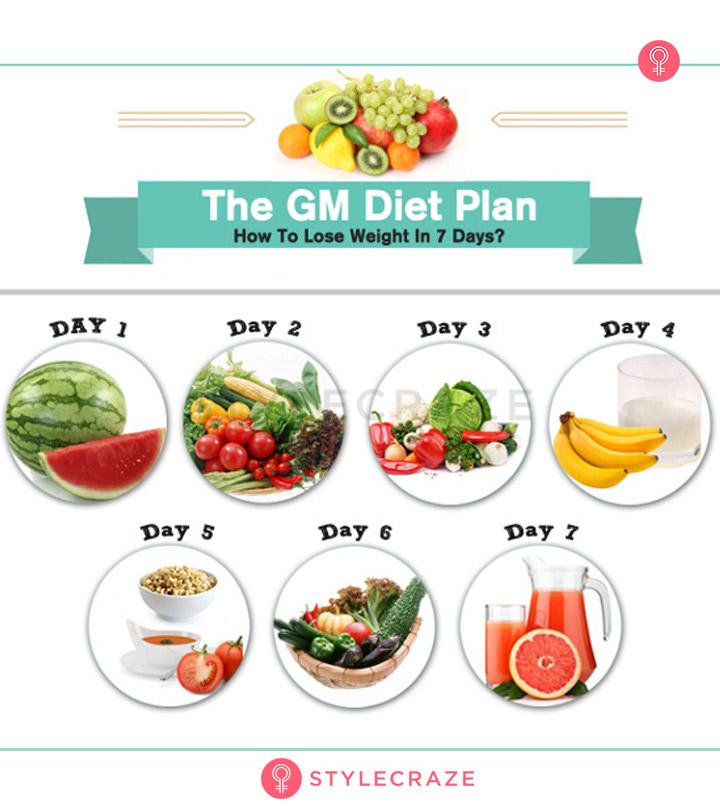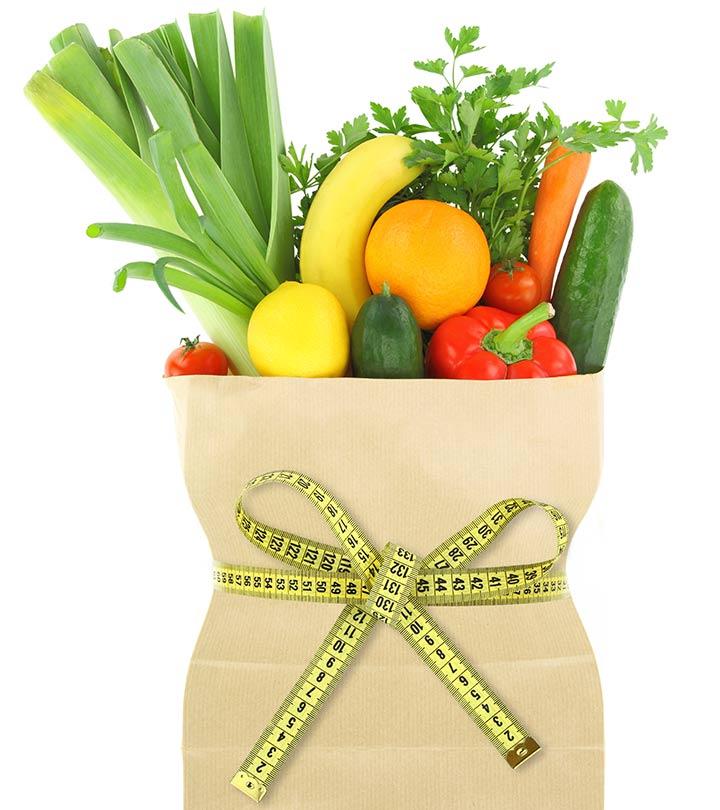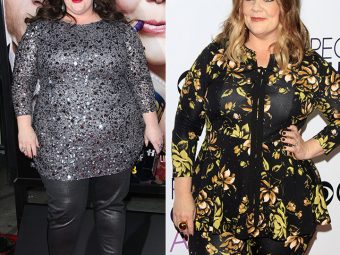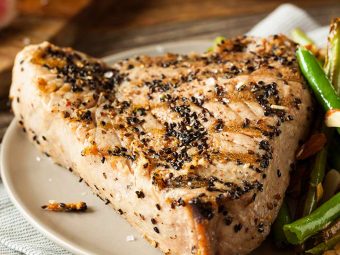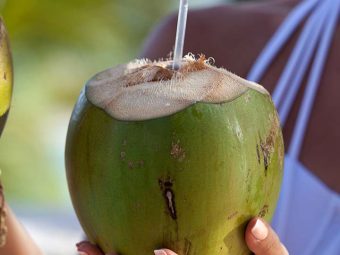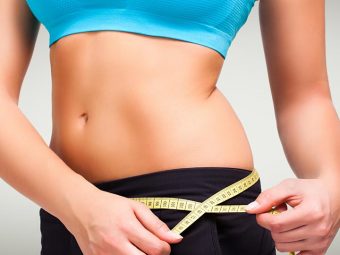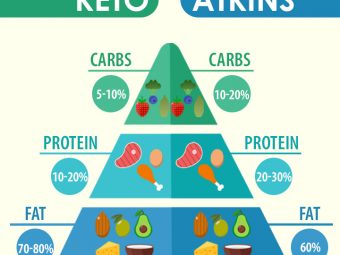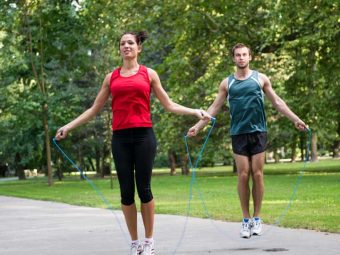The 500-Calorie Diet For Weight Loss – A Sample Meal Plan, Benefits, and Health Risks
Keeping a close eye on your calorie intake could be the catalyst you need to lose weight.

Image: Shutterstock
The 500-calorie diet plan has been devised to help lose weight. Doctors usually recommend this very low-calorie diet (VLCD) for individuals with obesity (BMI – over 30), whose health is at risk owing to the excess fat.
However, lactating and pregnant women are a big no for taking up this diet. This article explains what this diet is all about, its benefits, and its potential risks. Read on!
In This Article
What Is The 500 Calorie Diet Plan?
The 500 calorie diet is an extreme form of a very low-calorie diet, i.e., it is extremely low in calories. It replaces the normal food routine with liquid supplements, meal replacement shakes, and bars for a specific period (1).
Having dietary supplements or meal replacements has become widespread in the US. According to the National Health and Nutrition Examination Survey, 2017– March 2020, over one-third of adolescents and nearly three out of five adults consume dietary supplements.
This restricted calorie consumption may help your body use the stored fuel source, i.e., fat. This, in turn, helps you shed pounds.
This is a type of 5:2 intermittent fasting plan that involves severe energy restriction for two non-consecutive days of a week and consuming 2000 calories on the other five days. This type of modified diet can fulfill 20-25% of energy needs on fasting days (2).
Studies showed that hypocalorici XA very low-calorie diet with extremely low daily food energy consumption. Also known as semistarvation. intermittent fasting could help overweight and obese individuals lose weight. However, these studies are inconclusive, and more research is needed to confirm these findings (3).
What should your 500-calorie diet plan look like? Scroll down to find out.
Note: Follow this very low-calorie diet (VLCD) only under the supervision of a doctor or a nutritionist.
A 500-Calorie Sample Meal Plan For Weight Loss
As part of the 5:2 diet plan, you need to be on a low-carb diet for two days. But what exactly should you eat?
1. Breakfast
Breakfast Options | Amount | ||
|---|---|---|---|
Decaffeinated tea or skimmed milk or black coffee without sugar | 8 ounces | ||
Small banana + ricotta cheese | 1 banana + 1 medium bowl | ||
Hard boiled egg + Wheat bread toast | 1 each | ||
Decaffeinated tea or skimmed milk or black coffee without sugar | 1 cup + 4 tablespoons + 1 date |
Tip: If you feel hungry before lunch, you can drink a cup of green tea without sugar.
2. Lunch
Lunch Options | Amount | ||
|---|---|---|---|
Salad with a light dressing | 1 medium bowl | ||
Blueberries and Greek yogurt | 1 cup | ||
Vegetable soup made with cabbage, spinach, broccoli, or any leafy vegetable | 1 cup | ||
Grilled chicken or fish + Grilled broccoli and carrot | 3 oz fish or chicken and ¼ cup veggies | ||
Lettuce wraps with fish/mushroom/chicken/tofu | 1 wrap with 2 oz fish/chicken/mushroom/tofu |
Tip: Drink a glass of lukewarm water 20 minutes before lunch to avoid overeating.
3. Dinner
Dinner Options | Amount | ||
|---|---|---|---|
Chicken or mushroom clear soup | 1 medium bowl | ||
Broccoli and grilled turkey/tofu tossed in a little chili garlic oil | 1 medium bowl | ||
Egg white omelet with mushroom and spinach | 2 eggs, 6 mushrooms, ½ cup spinach | ||
Stir-fried veggies with red bell pepper, carrots, broccoli, tofu, and beans | 1 cup + 1 teaspoon balsamic vinegar + chili flakes |
Tip: Drink water, and if you feel hungry, have a glass of coconut water or unstrained vegetable juice.
You can choose from these options and create an ideal, customized diet plan suitable for you. Make sure you consult your doctor and dietitian before starting this diet.
What are the benefits of the 500-calorie diet? Find out in the next section.
Benefits
The main benefit of the 500-calorie meals is that they may aid in rapid weight loss. Following a VLCD may help revamp your metabolism. It accelerates fat oxidation, helping you shed weight (4). It is great for those who need to lose weight to prevent any health risks.
But what if you are on this diet even if you don’t need to? Or what if you are on a 500-calorie diet for three weeks or more without being supervised by a doctor? Here’s what may happen.
Health Risks
1. Nutritional Deficiencies
Following a 500-calorie diet plan for long leads to nutritional deficiencies. A study published in the Nutrition Journal showed that a very low-calorie diet formula could lead to micronutrient deficiencies (5).
There was a significant reduction in the serum concentration of vitamin D, vitamin C, and zinc among obese people on a low-calorie diet for over 12 weeks (5).
Low-calorie diets can cause nausea, fatigue, diarrhea, intolerance to colds, menstrual irregularities, and hair loss. Lack of fiber in the diet can also cause constipation. This decreases the efficiency of the immune system and makes your body vulnerable to various ailments.
Jesse Feder, Registered Dietitian, says, “ A person can only survive short term on 500 calories a day. This is extremely low and can lead to serious health issues over time.”
2. Muscle Loss
Do you want to lose weight? Then, lose fat, not muscle. If you are on a VLCD for a prolonged period, you will start losing muscle mass instead of fat mass and might end up not liking your body transformation.
A very low-calorie, low-carbohydrate, low-protein diet can cause skeletal muscle loss (6). This can give you a “slim-fat” look and make your skin loose and droopy.
3. Metabolic Changes
Following a very low-calorie diet for a long period slows down metabolism. This ultimately leads to weight gain when you return to the original eating pattern.
A study published in Nutrition & Metabolism showed that a sudden reduction in body weight due to a low-calorie diet plan reduced the resting metabolic rate (RMR), but it was not as expected (7).
4. Decrease In Bone Mass
Weight loss due to following a calorie-restricted diet for a long time decreases bone mineral density and weakens bone strength (8).
A study showed that low-calorie diet-induced weight loss is accompanied by a loss of bone mass (9). Another study on 48 adults showed that calorie restriction (CR) reduced bone mineral density and bone mass (10).
5. Development Of Gallstones
Following a very low-calorie diet (500 calories) can increase the risk of developing gallstones.
A study published in the International Journal of Obesity showed that following VLCD for over one year resulted in cholelithiasis (the formation of stones in the gallbladder). Many of the adults had to undergo cholecystectomy (removal of the gallbladder) (11).
6. Deficiency Of Healthy Fat
A low-calorie diet is devoid of healthy fats to restrict unnecessary calorie intake. Consuming healthy fats in portion control provides satiety and helps you stay healthy (12).
Following a very low-calorie diet with restricted healthy fat intake reduces the absorption of fat-soluble vitamins, leading to deficiency (13).
You may be wondering who can follow this diet and who should avoid it. Find the answers below.
 Quick Tip
Quick TipWho Can Follow The 500-Calorie Diet?
People with a BMI of more than 30 (from obesity grade I to grade III) should follow a very low-calorie diet under the proper supervision of a doctor or a nutritionist.
 Did You Know?
Did You Know?According to Jesse Feder, Registered Dietitian, “The amount of time a person can live on 500 calories a day depends on several factors, such as height, current weight, metabolism, and current health conditions. Overall, however, one can not live long on 500 calories a day. A popular 500-calorie diet plan is a version of intermittent fasting. It is called the 5:2 plan and means you eat a normal healthy diet 5 days a week and then only 500 calories on two non-consecutive days of the week.”
Who Should Avoid A Very Low-Calorie Diet?
Generally, doctors do not allow people with medical conditions to follow a VLCD. It is advisable not to follow any calorie-restricted diet under the following clinical conditions:
- Heart disease
- Diabetes
- Kidney diseases
- Gout (accumulation of uric acid in joints)
- Gallstones
There are a lot of foods that are low in calories or marketed as low or zero-calorie drinks or foods but are harmful to the body. Hence, you should be aware while making food choices. You should have a clear idea of what to eat and avoid if you are on a 500-calorie diet.
Foods To Eat On The 500-Calorie Diet
- Non-starchy vegetables like broccoli, carrot, beetroot, scallion, cabbage, lettuce, and parsnip. These are low in calories and loaded with nutrition. They will make you lose weight without putting your health in danger.
- Salads, sautéed, stir-fried, and blanched food. These minimize the disruption of valuable enzymes and phytonutrients.
- Full-fat milk and yogurt. Full-fat versions are more nutritious and will help keep hunger at bay.
- Fruits and freshly pressed fruit juices. Make sure you don’t consume high GI foods like mangoes, pineapple, and grapes.
- Low-calorie salad dressing like olive oil, lime juice, salt, and pepper.
- Pre-cooked chicken and shrimps.
- Pre-washed veggies.
Here’s the list of foods you must avoid while on the 500-calorie diet.
Foods To Avoid On The 500-Calorie Diet
- Processed foods like sausages and salami.
- Canned veggies, fruits, etc.
- Energy drinks, soda, and bottled fruit juices.
- Dried fruits.
- Sugary foods like cake, pastry, pancake, and candies.
Infographic: How To Suppress Hunger Pangs On A 500-Calorie Diet
Being on the 500-calorie diet is not easy, especially at the start. You are more likely to give in to your hunger cravings and end up binging. But thankfully, there are simple things you can do to tame those cravings.
Check out the below infographic to learn how to suppress hunger pangs while on the 500-calorie diet.

Illustration: StyleCraze Design Team
Save the high-quality PDF version on your device now.
Download Infographic
In today’s world, fitness and a healthy lifestyle are essential for maintaining optimal health. One of the most effective ways to achieve a healthy weight is through a balanced diet plan. Calorie counting and meal prep are good ways to manage your diet. By following a 500-calorie diet plan for weight loss, you can set and achieve your health goals. It helps boost metabolism and promotes fat oxidation, which may cause you to lose those stubborn pounds. This diet is usually recommended for those with obesity. People who have diabetes, heart and kidney diseases, or gout must avoid it. A sustainable diet should only be followed under the supervision of a doctor or a dietitian. Following it for more than a week may result in nutritional imbalances, weakened immunity, fatigue, weakness, hair loss, and gallstones. So, practice caution.
Frequently Asked Questions
How many pounds will I lose if I eat 500 calories a day?
Following a VLCD (500 calories per day) can help you reduce 15-20 pounds in a month.
How much weight can you lose per week on the 5:2 diet?
The 5:2 diet plan can help you lose 5-7 pounds in a week, depending on your body type.
What recipes can I include in a 500-calorie diet?
Foods that are loaded with low-calorie vegetables and fruits can be included in a 500-calorie diet. You can make vegetable soup, vegetable salad, fruit salad with low-fat yogurt, or a portion of grilled chicken or fish with grilled veggies for lunch or dinner to satisfy your hunger pangs.
Can I follow a 500-calorie diet for 3-4 weeks?
Following a very low-calorie diet (500 calories) for more than a week makes your body weak and lowers your immunity and productivity. Hence, it is important to consult your doctor and dietitian before following a VLCD for a long time.
What types of snacks can I eat on a 500 calorie diet?
Eat healthy and low calorie snacks like fruit bowls, trail mixes with dry fruits, nuts and seeds, cut veggies with hummus, and hard-boiled eggs.
Is it necessary to exercise while on a 500 calorie diet?
It is not necessary to exercise while on this diet. If you try to exercise you could feel exhausted because of your low calorie intake. Exercise after three to four hours of eating a full meal and consume a low-fat, moderate-protein snack 30 minutes before working out for an energy boost.
Key Takeaways
- The calorie intake should be limited to promote weight loss. This can be determined by calculating daily calorie needs and reducing it by 500.
- This very low-calorie diet plan includes protein-rich foods with a balance of carbs and healthy fats.
- However, it may cause nutritional deficiencies, the development of gallstones, and muscle loss so consultation with a dietician is advised.
Discover a balanced and satisfying 500-calorie meal plan to help you get started on your fitness journey. Watch this video to enjoy delicious meals while maintaining a healthy calorie intake.
Sources
- WADDEN, THOMAS A., Albert J. Stunkard, and Kelly D. Brownell. “Very low calorie diets: their efficacy, safety, and future.” Annals of Internal Medicine 99.5 (1983): 675-684.
https://www.ncbi.nlm.nih.gov/books/NBK311324/ - Patterson, Ruth E., et al. “Intermittent fasting and human metabolic health.” Journal of the Academy of Nutrition and Dietetics 115.8 (2015): 1203-1212.
https://www.ncbi.nlm.nih.gov/pmc/articles/PMC4516560/ - Harris, Leanne, et al. “Intermittent fasting interventions for treatment of overweight and obesity in adults: a systematic review and meta-analysis.” JBI database of systematic reviews and implementation reports 16.2 (2018): 507-547.
https://pubmed.ncbi.nlm.nih.gov/29419624 - Heilbronn, Leonie K., et al. “Alternate-day fasting in nonobese subjects: effects on body weight, body composition, and energy metabolism.” The American journal of clinical nutrition 81.1 (2005): 69-73.
https://pubmed.ncbi.nlm.nih.gov/15640462 - Damms-Machado, Antje, Gesine Weser, and Stephan C. Bischoff. “Micronutrient deficiency in obese subjects undergoing low calorie diet.” Nutrition journal 11.1 (2012): 34.
https://www.ncbi.nlm.nih.gov/pmc/articles/PMC3404899/ - Willoughby, Darryn, Susan Hewlings, and Douglas Kalman. “Body composition changes in weight loss: strategies and supplementation for maintaining lean body mass, a brief review.” Nutrients 10.12 (2018): 1876.
https://www.ncbi.nlm.nih.gov/pmc/articles/PMC6315740/ - Gomez-Arbelaez, Diego, et al. “Resting metabolic rate of obese patients under very low calorie ketogenic diet.” Nutrition & metabolism 15.1 (2018): 18.
https://www.ncbi.nlm.nih.gov/pmc/articles/PMC5816424/ - Hunter, Gary R., Eric P. Plaisance, and Gordon Fisher. “Weight loss and bone mineral density.” Current opinion in endocrinology, diabetes, and obesity 21.5 (2014): 358.
https://www.ncbi.nlm.nih.gov/pmc/articles/PMC4217506/ - Jensen, Lars Bjørn, et al. “Bone mineral changes in obese women during a moderate weight loss with and without calcium supplementation.” Journal of Bone and Mineral Research 16.1 (2001): 141-147.
https://pubmed.ncbi.nlm.nih.gov/11149478 - Villareal, Dennis T., et al. “Bone mineral density response to caloric restriction–induced weight loss or exercise-induced weight loss: a randomized controlled trial.” Archives of internal medicine 166.22 (2006): 2502-2510.
https://pubmed.ncbi.nlm.nih.gov/17159017 - Johansson, Kari, et al. “Risk of symptomatic gallstones and cholecystectomy after a very-low-calorie diet or low-calorie diet in a commercial weight loss program: 1-year matched cohort study.” International journal of obesity 38.2 (2014): 279-284.
https://www.ncbi.nlm.nih.gov/pmc/articles/PMC3921672/ - Samra, Rania Abou. “Fats and satiety.” Fat Detection: Taste, Texture, and Post Ingestive Effects (2010).
https://www.ncbi.nlm.nih.gov/books/NBK53550/ - Damms-Machado, Antje, Gesine Weser, and Stephan C. Bischoff. “Micronutrient deficiency in obese subjects undergoing low calorie diet.” Nutrition journal 11.1 (2012): 34.
https://www.ncbi.nlm.nih.gov/pmc/articles/PMC3404899/ - “Preoperative Very Low-Calorie Diet Reduces Technical Difficulty During Laparoscopic Cholecystectomy in Obese Patients.” Surg Laparosc Endosc Percutan Tech 2016 Jun;26(3):226-9.
https://pubmed.ncbi.nlm.nih.gov/27258913/#:




